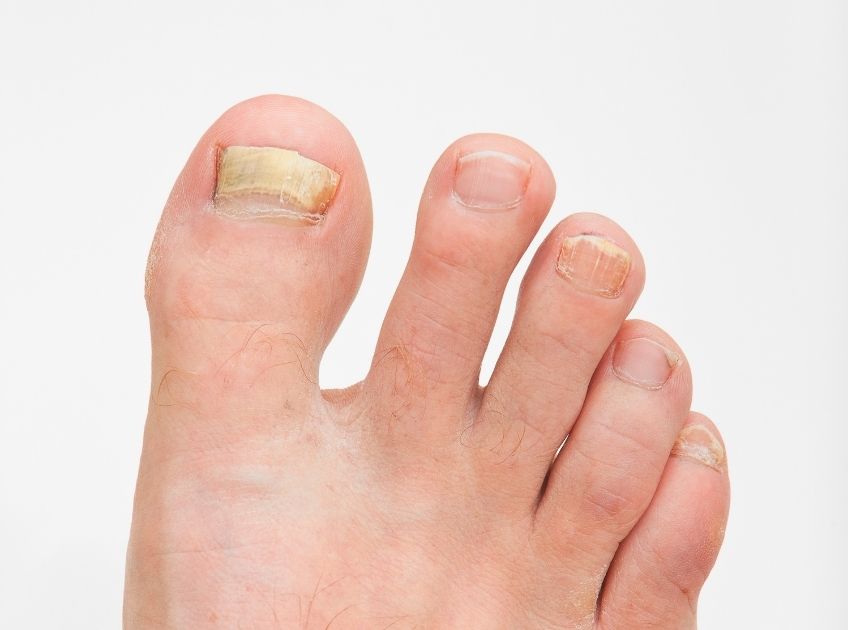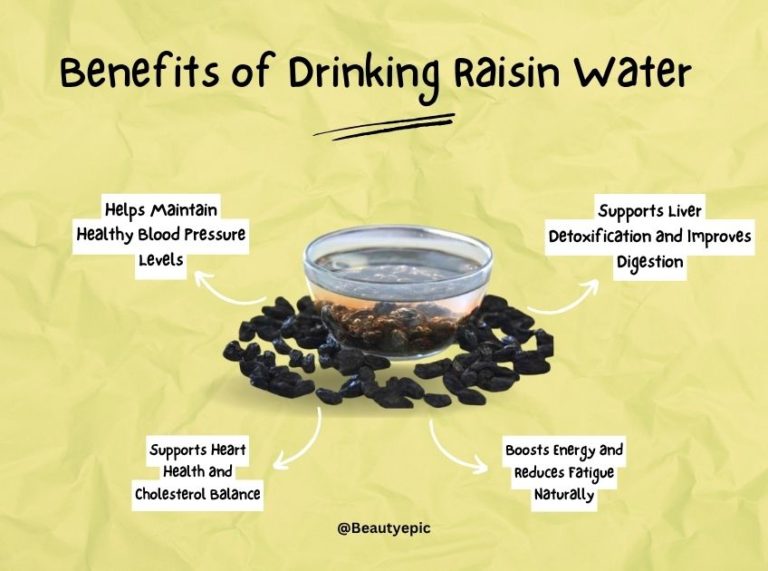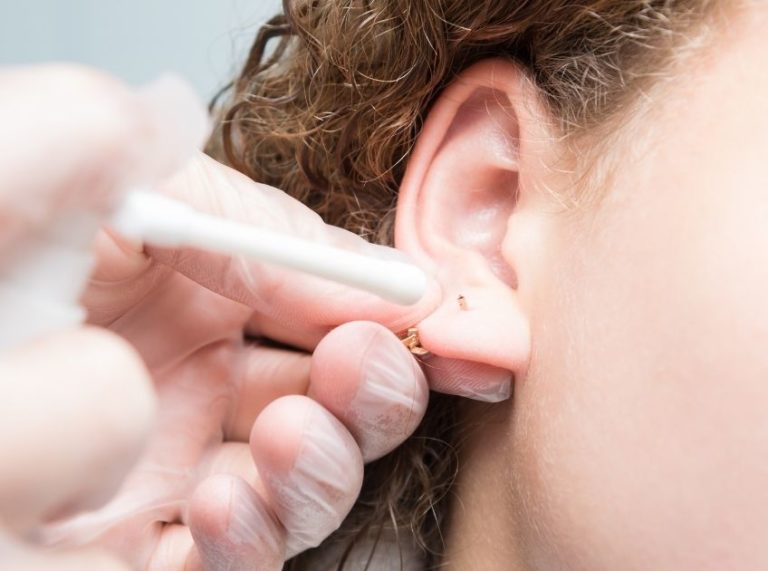
Important: This article is for informational purposes only. Please read our full disclaimer for more details.
Toenail fungus (onychomycosis) is a common infection that causes nail discoloration, thickening, brittleness, and a foul odor. It often begins as a small white or yellow spot under the nail and gradually spreads deeper if left untreated.
Many people explore natural alternatives like essential oils before turning to medication. But do they really work? Here’s a research-backed guide.
Article Contains
Can Essential Oils Help Treat Toenail Fungus?
Essential oils have gained popularity as natural alternatives for managing toenail fungus because many of them possess antifungal, antiseptic, and antimicrobial properties (1). While they may not work as fast as medical antifungal drugs, they can support fungal reduction, improve nail appearance, and soothe surrounding skin inflammation when used consistently.
Here’s how the most effective essential oils help:
1. Tea Tree Oil
Often considered the top choice for nail fungus, tea tree oil contains terpinen-4-ol, a compound known for its powerful antifungal and antibacterial action. It helps fight off the fungus and prevents further growth, making it ideal for early to moderate infections.
2. Oregano Oil
Oregano oil is a strong natural antifungal due to carvacrol and thymol, two potent compounds that inhibit fungal activity. However, it must be used carefully and always diluted, as it can cause skin irritation due to its strong potency.
3. Lavender Oil
Lavender oil not only offers antifungal benefits but also helps reduce redness, irritation, and itchiness around the infected nail. It can be paired with stronger oils to create a more balanced treatment that doesn’t overly dry the skin.
4. Eucalyptus Oil
Known for its germ-fighting and anti-inflammatory properties, eucalyptus oil can support nail recovery by inhibiting fungal growth and promoting a healthier nail bed environment.
Does It Work for Everyone?
Essential oils are most effective for mild to moderate fungal infections when started early. Results are gradual and require consistent daily application for several weeks. While they can be a natural alternative, they aren’t a guaranteed cure for everyone, especially for serious infections that have spread into the nail bed.
Beyond Essential Oils: Other Proven Treatment Options
Although essential oils can be helpful, sometimes additional or more advanced treatments are necessary—especially when the infection is severe, painful, or has lasted for months or years.
Here are trusted options to consider:
1. Over-the-Counter (OTC) Antifungal Creams & Sprays
These are easily accessible and can help reduce fungal growth when applied regularly. They work best when the infection is on the surface of the nail or surrounding skin.
2. Prescription Antifungal Medication
Doctors may prescribe oral antifungal tablets (such as terbinafine) for stubborn or recurring cases. These medications target fungus from within the body, making them more powerful but requiring a doctor’s supervision due to possible side effects.
3. Antifungal Nail Lacquers
Medicated nail lacquers (like ciclopirox) are painted onto the nail and allowed to penetrate the layers. They work gradually and are ideal for mild to moderate infections.
4. Laser Therapy
A more modern approach, laser treatment destroys the fungus using concentrated light beams. It is painless and non-invasive, but may require multiple sessions and can be costly.
5. Supportive Home Remedies
These are not cures but can complement treatment:
- Vinegar foot soak helps maintain an acidic pH that discourages fungi.
- Epsom salt soak soothes the skin and softens the nail for easier application of treatments.
- Combining medical care with home and natural remedies often gives the best outcome, especially when paired with good foot hygiene.
DIY Antifungal Essential Oil Blend for Toenail Care
A simple but effective essential oil blend can support nail recovery when used consistently. Below is a dermatologist-approved formulation designed to deliver antifungal benefits while protecting your skin from irritation.
Ingredinets:
- Tea Tree Oil – 3 drops (primary antifungal)
- Oregano Oil – 2 drops (potent antifungal booster)
- Lavender Oil – 2 drops (skin-soothing and antifungal)
- Coconut Oil – 1 teaspoon (carrier oil to dilute and moisturize)
Why These Ingredients Work:
- Coconut oil contains lauric acid, which has natural antimicrobial benefits and helps the oil penetrate the nail.
- Tea tree + oregano create a strong antifungal synergy.
- Lavender helps counterbalance irritation while supporting healing.
How to Prepare & Use:
- Add all oils to a clean glass bottle or small bowl.
- Mix well until fully blended.
- Wash your feet and dry thoroughly, especially between the toes.
- Apply a small amount directly over the affected nail, cuticle, and surrounding skin.
- Allow it to absorb fully. Do not rinse.
- Repeat twice daily for best results.
Important Tips for Best Results:
- Trim nails short weekly to allow oils to penetrate deeper.
- File the top surface of the infected nail every few days to remove dead layers.
- Consistency is key — visible improvement may take 6–10 weeks, and full nail regrowth may take several months.
- Always do a patch test first to ensure your skin doesn’t react to strong oils like oregano.
Stop Reinfection Before It Starts: Smart Prevention Tips
To prevent toenail fungus from returning:
- Keep feet dry, clean, and well-ventilated
- Change socks daily and choose breathable fabric
- Avoid walking barefoot in public showers, gyms, or pools
- Disinfect nail clippers and footwear regularly
- Trim nails short and straight
- Avoid sharing shoes or pedicure tools
- Healthy foot hygiene plays a major role in preventing fungal growth.
What Does Science Say About Essential Oils for Nail Fungus?
- Tea Tree Oil: A study published in the Journal of Family Practice found a 60% improvement in nail appearance when using tea tree oil over several months (2).
- Oregano Oil: Research highlights carvacrol as a strong antifungal agent capable of inhibiting fungal activity (3).
- Lavender & Eucalyptus Oils: Both have demonstrated antifungal effects in laboratory studies, supporting their traditional use for fungal infections (4).
While research is promising, most studies are small-scale. More clinical evidence is needed to confirm long-term effectiveness.
Frequently Asked Questions (FAQ’S)
1. How long does it take for essential oils to work on toenail fungus?
A. Results vary, but noticeable improvement usually takes 6–12 weeks. Complete nail regrowth may take several months.
2. Can essential oils cure severe toenail fungus?
A. They may help reduce fungal growth and symptoms, but severe or long-standing infections often require medical treatment.
3. Is it safe to apply essential oils directly to the skin?
A. No. Essential oils must be diluted with a carrier oil to avoid irritation or burns.
Essential oils can be a helpful natural approach for mild to moderate toenail fungus thanks to their antifungal properties. However, patience and consistent application are crucial. For advanced or painful infections, combining natural remedies with medical treatment provides the best results.
If symptoms worsen or don’t improve, consult a healthcare professional or dermatologist.















